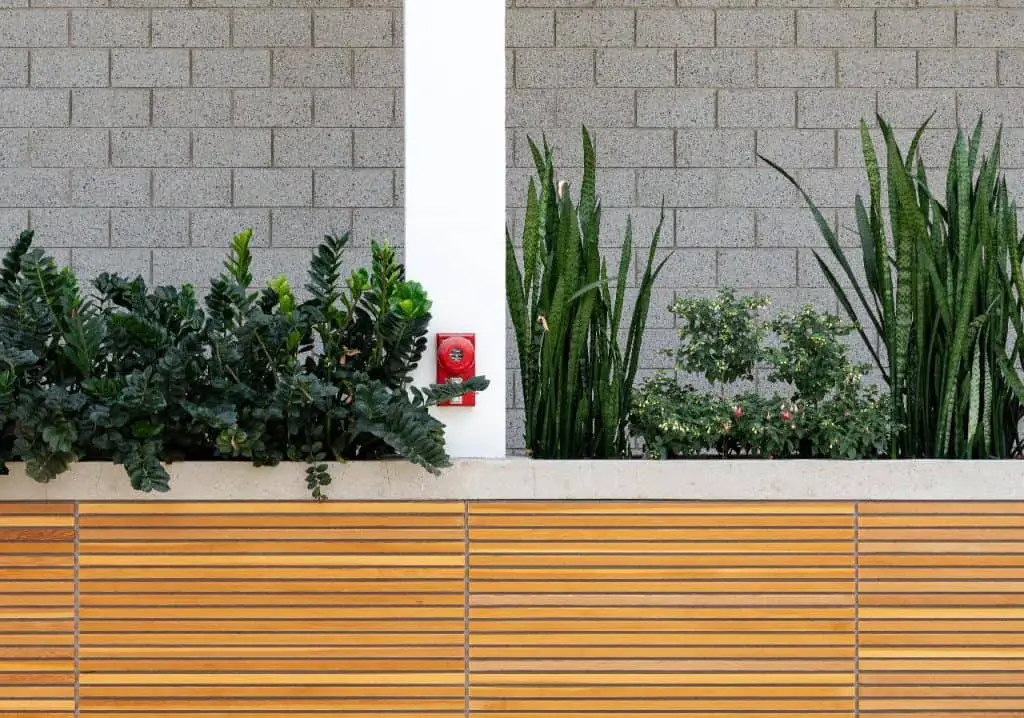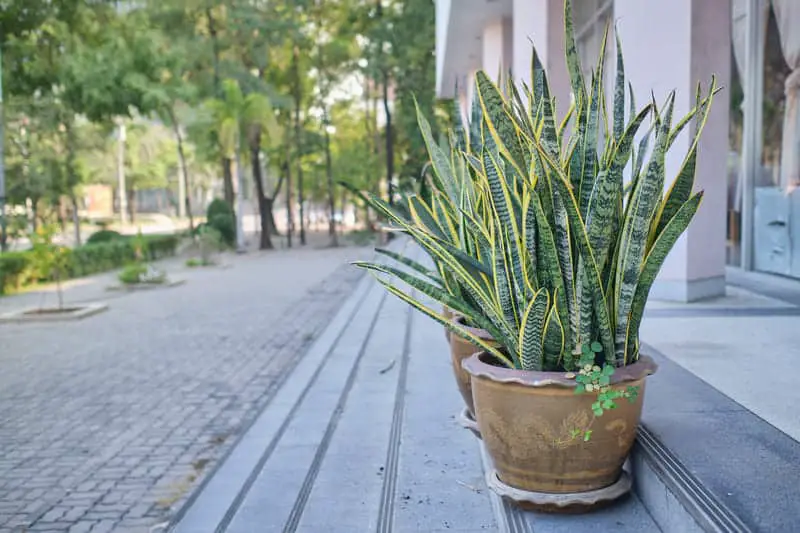Snake plant as well-known as mother-in-law’s tongue is one of the most popular houseplants.
It is very easy to grow and care for. That’s why most plant enthusiasts choose it as a houseplant.
Additionally, the snake plant is a very nice addition to interior design. Even though the snake plant is popular as a house plant, you might be wondering if this plant can live outside. In today’s article, we will discuss if you can have a snake plant outdoors and how to treat the plant.
Snake plants can live outside in suitable conditions, such as warm, dry climates with bright, indirect light. They are known for their ability to tolerate a wide range of temperatures, drought, and low light conditions, making them a low-maintenance and hardy indoor or outdoor plant.
Therefore, the snake plants love the warm temperature, and given the suitable conditions it can thrive outdoors. There are several factors that you should consider if you want to grow a snake plant outside such as the following.
Can snake plants be grown outside directly in soil?

But not every location is preferable for growing snake plants outside.
If you live in the Northern countries where cold seasons are tough and the temperature gets below 55 degrees, then you should reconsider planting snake plants outside. If it gets cold in winter, we suggest you grow the snake plant in a pot and move it outdoors in summer.
This way, snake plants will be protected during winter and they will have a chance to flourish in warmer seasons. If you live in a warmer country, where even winter tends to be light, you might be able to plant snake plants in your garden. Just keep in mind the next important factors.
How can snake plants be kept outside?
As we already explained, snake plants can live outside. However, you have to make sure that the outdoor environment suits the plants’ needs, so consider the next 3 key factors.
Choosing the right temperature
It depends on the overall temperature if you can keep the plants outside all-yearlong or just for several months. To determine whether your snake plant can live outside temporarily, just check the temperature.
Snake plants come from the tropical region of Africa; therefore, they prefer warm temperatures. The perfect temperature for a snake plant is from 55 to 90 degrees.
If you live in a place where this temperature is all year round, then you can plant these plants outside. If the temperature gets below 55 degrees, then you should have a snake plant indoors.
During spring and summer, you can move the snake plant outdoors, just be aware of the temperature. Snake plants cannot survive cold winters. The plant will die if you leave it outside for several days during temperatures below 55 degrees Fahrenheit.
Watering a snake plant outdoors
Snake plants are very easy to take care of because they can survive for a long time without water. Snake plants are succulents, therefore they are very resilient against water loss. The key to keeping this plant happy is the right watering habit, indoors as well as outside.
Overwatering is the most common issue with snake plants. Remember, you do not have to water this plant very often. The watering frequency depends on your environment and humidity.
You can find out if the snake plant needs watering by checking the soil. Just stick your finger in the soil (2 inches) and if it is dry, then water the plant. This rule applies to snake plants outdoors as well as indoors.
In both cases, you are supposed to water the base of the plant. The leaves of the snake plant do not like getting water and also, it might lead to overwatering. If you have moved your snake plant outdoors temporarily, you should change your watering habits according to the changes.
If you have planted snake plants in the soil, outdoors, we recommend you to plant them separately. Since the watering habits of snake plants are different, it will be better to plant them a bit away from the other plants.
Plants that are planted next to each other share the soil and water. If you plant them near your other plants that need frequent watering, then you are endangering overwatering of a snake plant. Therefore, it is better to plant the snake plants separately.
Lighting matters, even outdoors
Snake plant is known for being resilient in dark spaces.
That’s why the plant can look amazing even in the badly lighten rooms. Snake plants are flexible and can adapt to different lighting, but they do not enjoy too much direct sunlight.
Snake plants love indirect, but bright light. It is better if the snake plant does not get direct sunlight at all, but if you have planted the snake plant outside, that is not the option.
In that case, plant snake plant in a place where it will get just a couple of hours of direct sunlight. Of course, snake plants can live with direct sunlight. But it is not the best lighting option for the plant.
If you have a snake plant in a pot and want to move it outside during warmer seasons, make sure that the plant has time to adapt to lighting.
How to move Snake plants from indoors to outside?
This is the most important topic if you want to keep your snake plant happy and healthy. You should give your snake plant time to adapt to changes. These changes include lighting, temperature, and watering needs.
When it gets warmer and you are willing to move the plant outside, start with a small change. First, move the plant closer to the window, let it get used to the lighting. Also, slowly increase the intake of water.
The evaporation process is way quicker outside if you do not live in a very humid place. So, if the evaporation is quicker, your plant will need more water.
Additionally, you should consider that warmer seasons are considered growth periods for plants. This means that your snake plant will need more energy. Thus, you should water it more often.
Key benefits of a snake plant
The snake plant is a beautiful addition to your home as well as your garden. In addition to an amazing appearance, the snake plant offers other benefits such as the following.
Filters the air
The snake plant, as a succulent has the ability to clean the air.
Snake plants can absorb harmful toxins such as CO2 and benzene.
Of course, the plant cannot remove big quantities of toxins, but it can help freshen the air. This ability makes the snake plant more useful as an indoor plant. Its ability to absorbs harmful toxins makes the snake plant perfect addition to your bedroom.
Effective against allergies
The snake plant absorbs CO2 even during the night and can produce oxygen.
These special abilities make this plant very efficient against allergies.
If you struggle with allergies, you can put a snake plant in a room where you spend most of your time. It is proven that the plant can decrease your chance of having airborne allergies.

